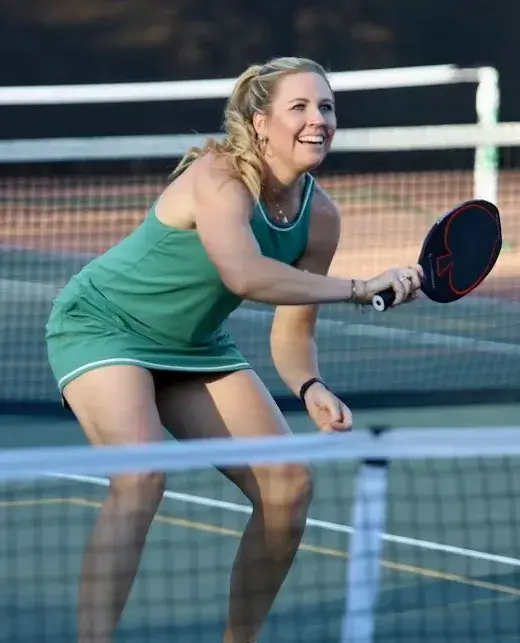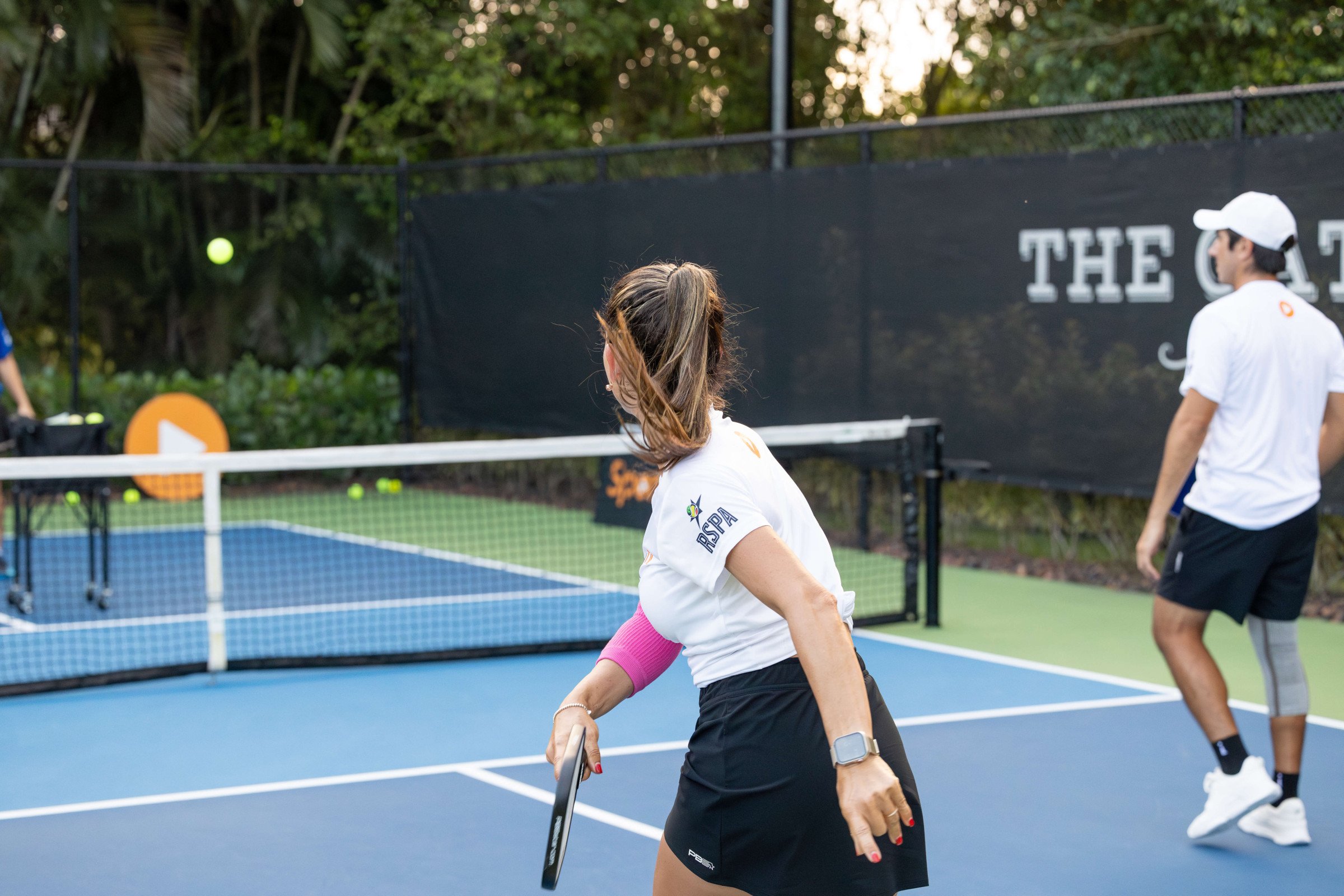Are you new to pickleball and feeling a little overwhelmed by the serve? You're not alone. The serve sets the tone for the entire rally, but navigating the rules and strategies can be tricky. This guide's frequently asked questions will help you cut through the confusion. From mastering the underhand motion to exploring sneaky tactics, you'll be serving with confidence and dominating your first move on the court in no time.
Who Serves First and When Do They Switch? Pickleball Serving Order Explained
Q: The net is up, paddles are prepped. How do you determine which side serves first in pickleball?
A: That's decided with a friendly coin toss, a quick paddle spin, or even a classic game of rock-paper-scissors – winner's choice. At the club I frequent, the side of the court closest to Seattle (birthplace of pickleball) gets to start.
Q: So, who gets served to?
A: The chosen server sends the ball diagonally across the court, from their right side to the opponents right side.
Q: Does the server stay glued to that spot?
A: Not at all. After each point, the server alternates sides – right, then left, and so on. This keeps things fresh.
Q: Doubles play changes things up, right?
A: You got it. In doubles, only the serving team switches sides. The non-serving team stays put on their respective sides of the court.
Q: How does serving change in singles play?
A: In singles, the server keeps serving until they make a mistake (a fault). Then, the opposing player gets to serve until they fault, and it keeps switching back and forth.
Q: Doubles serving sounds more complex. Who serves first in pickleball doubles?
A: For the first serve in doubles, it's a bit different. The chosen server (Server 2) starts things off. Once they fault, the opposing team's player on their right side (Server 1) gets to serve.
Q: What happens after that first double's serve?
A: After that first serve, things settle into a rhythm. Serving honors switch after each fault, going from a team's first server (Server 1) to their partner (Server 2), then to the other team's right-side player (Server 1) and their partner (Server 2), and then back and forth between teams.
Fault or No Fault?
The serve is the ignition spark that ignites a pickleball rally! But with all those lines and zones on the court, it can get confusing fast. Here are the answers to your most pressing questions about serving rules:
Q: I saw a double bounce on a serve. Is that a fault?
Oops, yes, a double bounce would be a fault.
Q: I served the ball! However, it landed across from my court, not diagonally. Is that a fault?
We hate to break it to you but yes, it’a fault. The first bounce into the opponent's side must land on the diagonal side of court, opposite from server.
Q: Help! My foot keeps stepping over the line when I serve. Is that a penalty?
Busted! Stepping on or over the baseline (including that sneaky little line extending out) during your serve is a foot fault.
Q: My opponent's serve feels like it's coming from outer space. Can it be that high?
The serve itself has to be underhand, but the release point (where you hit the ball) can be surprisingly high. As long as the contact with the ball happens below your waist, you're good to go.
Q: One serve and you’re out?
Yup, it’s one an done. You only get one try at your serve, but it helps keep the game moving. So focus on a smooth and controlled serve that’ll avoid those dreaded faults.
Serving Up Strategy
The serve is your chance to take control of the rally from the get-go. But power isn't everything in pickleball. Let's dive into some strategic serve questions to unleash your inner pickleball mastermind:
Q: Do you have to serve underhand in pickleball
No, you don't have to serve underhand in pickleball, but the serve must follow specific rules that resemble an underhand motion. The paddle must strike the ball below the server's waist (navel level), and the paddle face must move in an upward arc at the moment of contact. These rules are designed to ensure a fair and consistent serve while allowing players some flexibility in their serving style.
Q: Should I always blast the serve as hard as I can?
Power can be great, but control is key. Even with moderate power, a well-placed serve can throw your opponent off balance and set you up for the next shot.
Q: So, what are some sneaky serve tactics I can use?
Variety is the spice of life (and pickleball)! Try mixing up your serve speed – a slow, deceptive serve can catch your opponent off guard, while a faster serve can push them back toward the baseline.
Q: I hear some talk about "slice" and "topspin" serves. What's the deal?
These are different serve techniques that add a little extra spice. A slice serve spins the ball sideways, making it tricky for your opponent to control. A topspin serve makes the ball dip after it crosses the net, surprising your opponent. Experiment and see which ones work for you.
Q: My opponent keeps returning my serves right down the middle. Help!
Time to be unpredictable, Try aiming your serve toward the sideline service zones. This forces your opponent to move laterally, making it harder for them to return the serve powerfully.
Q: Should my serve strategy change depending on whether I'm playing singles or doubles?
Absolutely. In singles, you might focus on keeping your serve deep and in the service zone to push your opponent back. In doubles, you can use more strategic serves to target the opposing team's weaker player.
Q: Last question: Any secret weapons I can use with my serve?
The short serve. It might seem strange, but a well-placed short serve can catch your opponent off guard and force them to scramble. Plus, it throws off their timing for a powerful return. So, don't be afraid to mix things up and keep your opponent guessing.
Congratulations! You've unlocked the secrets to the pickleball serve. Remember, practice makes perfect, so grab your paddle and head out to the court to refine your technique. Don't be afraid to experiment with different serve styles and strategies to find what works best for you and keeps your opponent guessing.




